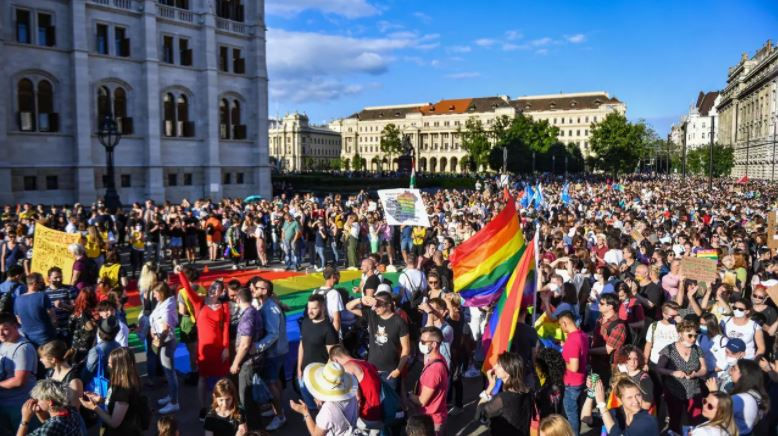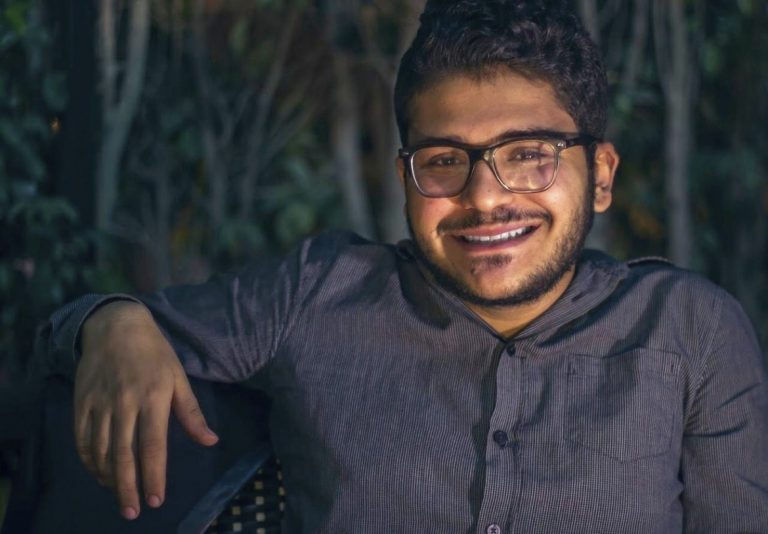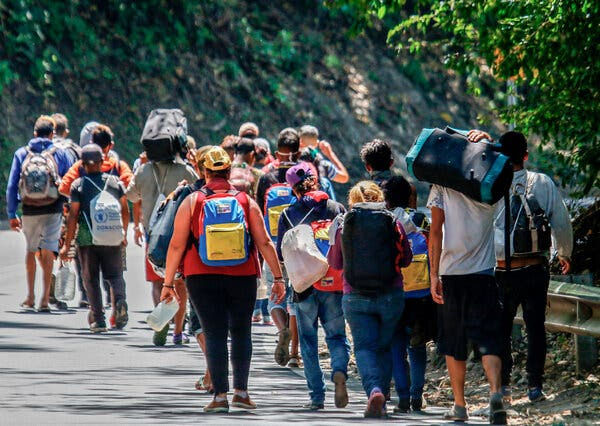A Never Ending War: Mexico's Drug Crusade
- Julia Grzegrzółka

- Jun 6, 2021
- 6 min read

When analyzing the problem of drug production and trafficking between the North and South Americas there is no doubt that the geographical location of Mexico plays an important role in the country’s involvement in the whole process. Mexico is located in North America and it shares its Northern border with the United States (US) making it the passageway to the rich American market.
Background
In order to fully understand the current situation, it is necessary to analyze the history and the development of drug production on the Mexican territory and the drug trafficking through the country to the United States.
After the completion of construction of the first transcontinental railroad, also known as the “Pacific Railroad”, in the second half of the XIXth century Chinese immigrants started relocating to Mexico [1]. They brought with themselves their customs and know-hows, one of them was opium production. Since it was very common among the Chinese at the time to smoke opium, they began planting opium poppies near the Mexican-American border [2]. Since then, local communities started dealing with opiates and their main buyers were their neighbors from the North, at the time living under prohibition [3]. What is more, during the Second World War, the demand for the opiates increased even more because they could be used for the production of much needed morphine. Furthermore, due to the cultivation of poppies on a large scale, Mexico became the only country in the Latin America producing opium. During the 1940s and the Second World War, production of heroin was introduced [4]. Most of the abovementioned activities took place close to the American border, in the mountains of the Sinaloa state. However, a mine industry crisis in states of Chihuahua and Sonora hit some of the newly unemployed workers, who decided to cultivate marijuana and ampoule [5].
The prices of heroin and marijuana rose throughout the 1960s and 70s (due to the increased demand during the cultural revolutions in the United States) which led to the expansion of drug production from Sinaloa to the neighboring states, which eventually led to the creation of the so-called ‘golden quadrangle’ [6]. This zone was made out of territories belonging to four states (Durango, Chihuahua, Sonora and Sinaloa) which are situated in an ideal location for conducting illegal activities - far from the law enforcement and close to the American border. The worsening economic conditions in Mexico motivated the creation of drug cartels and the smuggling of Colombian-produced drugs through the US border. However, with the fall of the Colombian cartels, the ones in Mexico gained more independence and were able to make more profit. Throughout the years the cartels began competing with each other and often it resulted in outbreaks of violence.
Cartels got significantly stronger during the rule of the Institutional Revolutionary Party (PRI) which ruled Mexico for several decades [7]. The cartels were able to create a network of connections and thanks to corruption remained unbothered for many years. The situation changed in the year 2000 when a candidate from the oppositional party Vicente Fox became president. Even though the corruption wasn’t completely eradicated the cartels did not have nearly as much influence in the governmental bodies as they did during the PRI’s rule.
In 1983, Peruvian President Fernando Belaúnde Terry coined the term ‘narcoterrorism’ when referring to the trafficking of drugs. What is so characteristic of the Latin American cartels is that they operate in a lot of similar ways to terrorist organizations. For example, by conducting attempts to influence governmental policies by intimidation and to disorganize the state. Since then, the link between trafficking and producing drugs and terrorism has also been recognized by the United Nations Security Council as narcoterrorism.
Mexican authorities took actions aimed at limiting the export of drugs and the influence that the cartels hold. In 2006, shortly after taking power, President Felipe Calderon declared war on the cartels, the so-called Drug War [8]. The President's strategy relied mostly on deploying the military into the territory of a given cartel and capturing those in charge of it. In many places the military served as a replacement of the local police because the President suspected the policemen of being corrupt and cooperative with the cartels. The operations were carried out with the support of the United States (under the Merida Initiative signed in 2008 [9]). Nonetheless, critics of President Calderon say that his plan was not effective since it caused multiplication of cartels (the bigger ones were crumbled into many smaller ones and instead of 6 there are now 37[10]). Additionally, during his term the number of homicides almost doubled in comparison to his predecessor’s term[11].
The following President, Enrique Peña Nieto, adopted a similar approach in fighting with the cartels to his predecessor. Even though he declared his willingness to focus more on protecting civilians and reducing violence overall, he heavily relied on the military. What is more, in 2018 which was the last year of his presidency a record of homicides was registered in Mexico[12].
Current Situation
Moving onto the current Mexican president - Andres Manuel Lopez Obrador (AMLO) it has to be mentioned that his strategy to counter the cartels is completely different. His “hugs not bullets” approach was mainly aimed at reducing violence and record high homicide rates. His plan is focused on reaching the root of the problem - the poor socioeconomic situation of people living in the zones controlled by the cartels. Furthermore, anti-corruption policies have also been put in place[13].
Since the beginning of the Drug War, 25 of the 37 drug traffickers have been captured, killed or extradited to the United States[14]. Until the end of Calderon’s term, around 110,000 tons of cocaine were confiscated and 180,000 hectares of land used to cultivate marijuana and poppies were destroyed[15]. During Pena Nieto’s term the majority of smugglers which were put on his wanted list were also captured. While AMLO has stated that creation of a new National Guard which sole purpose will be to combat cartels will increase the security in the country, the President has so far remained faithful to his ‘hugs not bullets’ approach[16]. As of now the strongest cartels remain the Sinaloa Cartel, the Jalisco New Generation Cartel, the Gulf Cartel and the Los Zetas Cartel[17].
Possible solutions
What are then the possible solutions and endings to the Mexican drug war? Firstly, it is important to acknowledge that these days the Mexican government is not facing a situation where the cartels are fighting between each other but they are rather fighting against the government over the control of the territories. The two main proposals to resolving the current situation include continuing military confrontations with the cartels or signing peace agreements[18]. Both are problematic for the government since the continuation of fighting means more violence but on the other hand, signing a peace treaty with drug traffickers for many seems unimaginable. However, with the not successful drug war the need for obtaining a consensus on the solution is urgent.
Strengthening the institutions, namely the ones in judiciary, could be one of the ways to improve the situation. Trust in those institutions is very low and therefore not many crimes are being reported[19]. If the citizens will be reassured that the institutions are effective perhaps a real change would take place.
Legalizing drugs has been appearing more and more often among potential solutions to the problem. In March 2021, Mexico’s lower house of Congress voted in favor of legalization of recreational use of marijuana. Possessing up to 5 grams was already legal since 2009, but now a person can possess up to 28 grams[20]. What is more, the bill would allow for individuals to grow cannabis on their own, however a permit from the National Council on Addictions would be required and the authorities could enter the premises on which the cannabis is cultivated without any warrant in order to check its legality[21]. These kinds of laws could be a breakthrough in the drug war. Taking away the product from the cartels and therefore decreasing their profit will undoubtedly diminish their power and control.
To conclude, the Mexican Drug War is still ongoing and Mexican authorities have so far failed at applying the right strategies and solutions. Moreover, taking into account the complexity of the issue and the scale of violence the country is facing, the government perhaps should pivot from its previous approach and navigate towards more innovative steps like the recent legalization of marijuana.
References
[1] Michał Szotek, "Wojny Narkotykowe A Współpraca Meksykańsko-Amerykańska W Zwalczaniu Handlu Narkotykami", SECURO 6-7 (2019): 52-54.
[2] Ibid.
[3] Ibid.
[4] Fernando Celaya Pacheco (2009) Narco Fearance: How has Narcoterrorism Settled in Mexico?, Studies in Conflict & Terrorism, 32:12, 1021-1048, DOI: 10.1080/10576100903319797
[5] Ibid.
[6] Ibid.
[7] "Mexico’S Long War: Drugs, Crime, And The Cartels", Council On Foreign Relations, 2021, https://www.cfr.org/backgrounder/mexicos-long-war-drugs-crime-and-cartels.
[8] "Mexico’S Long War: Drugs, Crime, And The Cartels", Council On Foreign Relations, 2021, https://www.cfr.org/backgrounder/mexicos-long-war-drugs-crime-and-cartels.
[9] "The Merida Initiative | U.S. Embassy & Consulates In Mexico", U.S. Embassy & Consulates In Mexico, 2021, https://mx.usembassy.gov/our-relationship/policy-history/the-merida-initiative/.
[10] Nicola Morfini, "How Can Mexico Break The Cycle Of Violence?", Aljazeera.Com, 2019, https://www.aljazeera.com/opinions/2019/11/3/how-can-mexico-break-the-cycle-of-violence.
[11]Laura Y. Calderón et al., Organized Crime And Violence In Mexico (San Diego: Department of Political Science & International Relations University of San Diego, 2019), https://justiceinmexico.org/wp-content/uploads/2019/04/Organized-Crime-and-Violence-in-Mexico-2019.pdf.
[13] Ibid.
[14]Nina Lakhani and Erubiel Tirado, "Mexico's War On Drugs: What Has It Achieved And How Is The US Involved?", The Guardian, 2016, https://www.theguardian.com/news/2016/dec/08/mexico-war-on-drugs-cost-achievements-us-billions.
[15] Ibid.
[16]Carrie Khan, "As Mexico's Dominant Cartel Gains Power, The President Vows 'Hugs, Not Bullets'", Npr.Org, 2020, https://www.npr.org/2020/07/23/893561899/as-mexicos-dominant-cartel-gains-power-the-president-vows-hugs-not-bullets.
[17] "Mexico Cartels: Which Are The Biggest And Most Powerful?", BBC News, 2019, https://www.bbc.com/news/world-latin-america-40480405.
[18] Nicola Morfini, "How Can Mexico Break The Cycle Of Violence?", Aljazeera.Com, 2019, https://www.aljazeera.com/opinions/2019/11/3/how-can-mexico-break-the-cycle-of-violence.
[19] Ibid.
[20]Luis Gomez Romero, "Mexico Moves To Legalize Cannabis Use, A Modest Step Toward De-Escalating Drug War", The Conversation, 2021, https://theconversation.com/mexico-moves-to-legalize-cannabis-use-a-modest-step-toward-de-escalating-drug-war-157223.
[21] Ibid.



Comments